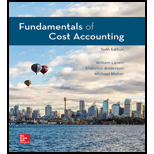
Strategy and
Joe’s Pizzeria was the only delivery-based pizza chain serving a small college town for more than 20 years. Students are very price conscious, so although Joe’s reputation centered on his special crust recipe, he emphasized good pizza at a good price. However, as the college and the surrounding town grew, national competitors Domino’s and Pizza Hut entered the market. Domino’s has cut into Pizza Hut and Joe’s delivery market, which has both delivery and in– store service, but has also acquired some of Joe’s traditional business. Joe has decided that he will abandon the low-price strategy and instead move up-market. He has decided to partner with a local brewpub and open a store that serves specialty pies and crusts with specialty in-house beers.
Required
- a. How will the changes in Joe’s business strategy affect the business model and the performance measures that will be important for running the business?
- b. How will Joe’s core assets and capabilities need to change as he changes his business strategy?
Want to see the full answer?
Check out a sample textbook solution
Chapter 18 Solutions
Fundamentals of Cost Accounting
- Team Shirts, Inc. had net cash from operating activities of $125,000. It paid $105,000 to buy a new computer system by signing a $85,000 note and paying the balance. Net cash from (or used for) investing activities for the period was _.arrow_forwardWhat is the company's unit contribution margin of this financial accounting question?arrow_forwardWhat is the amount of overapplied or underapllied overheadarrow_forward
- Provide answer the following requirements on these financial accounting questionarrow_forwardSolve this Accounting problemarrow_forwardDuring its first year of operations, Saboori Manufacturing paid $13,200 for direct materials and $11,500 for production workers' wages. Lease payments and utilities on the production facilities amounted to $10,400, while general, selling, and administrative expenses totaled $5,200. The company produced 6,200 units and sold 4,000 units at a price of $8.50 per unit. What is Saboori Manufacturing's cost of goods sold for the year?helparrow_forward
 Accounting Information SystemsAccountingISBN:9781337619202Author:Hall, James A.Publisher:Cengage Learning,
Accounting Information SystemsAccountingISBN:9781337619202Author:Hall, James A.Publisher:Cengage Learning, Cornerstones of Cost Management (Cornerstones Ser...AccountingISBN:9781305970663Author:Don R. Hansen, Maryanne M. MowenPublisher:Cengage Learning
Cornerstones of Cost Management (Cornerstones Ser...AccountingISBN:9781305970663Author:Don R. Hansen, Maryanne M. MowenPublisher:Cengage Learning Managerial Accounting: The Cornerstone of Busines...AccountingISBN:9781337115773Author:Maryanne M. Mowen, Don R. Hansen, Dan L. HeitgerPublisher:Cengage Learning
Managerial Accounting: The Cornerstone of Busines...AccountingISBN:9781337115773Author:Maryanne M. Mowen, Don R. Hansen, Dan L. HeitgerPublisher:Cengage Learning Auditing: A Risk Based-Approach to Conducting a Q...AccountingISBN:9781305080577Author:Karla M Johnstone, Audrey A. Gramling, Larry E. RittenbergPublisher:South-Western College Pub
Auditing: A Risk Based-Approach to Conducting a Q...AccountingISBN:9781305080577Author:Karla M Johnstone, Audrey A. Gramling, Larry E. RittenbergPublisher:South-Western College Pub Essentials of Business Analytics (MindTap Course ...StatisticsISBN:9781305627734Author:Jeffrey D. Camm, James J. Cochran, Michael J. Fry, Jeffrey W. Ohlmann, David R. AndersonPublisher:Cengage LearningPrinciples of Accounting Volume 2AccountingISBN:9781947172609Author:OpenStaxPublisher:OpenStax College
Essentials of Business Analytics (MindTap Course ...StatisticsISBN:9781305627734Author:Jeffrey D. Camm, James J. Cochran, Michael J. Fry, Jeffrey W. Ohlmann, David R. AndersonPublisher:Cengage LearningPrinciples of Accounting Volume 2AccountingISBN:9781947172609Author:OpenStaxPublisher:OpenStax College





